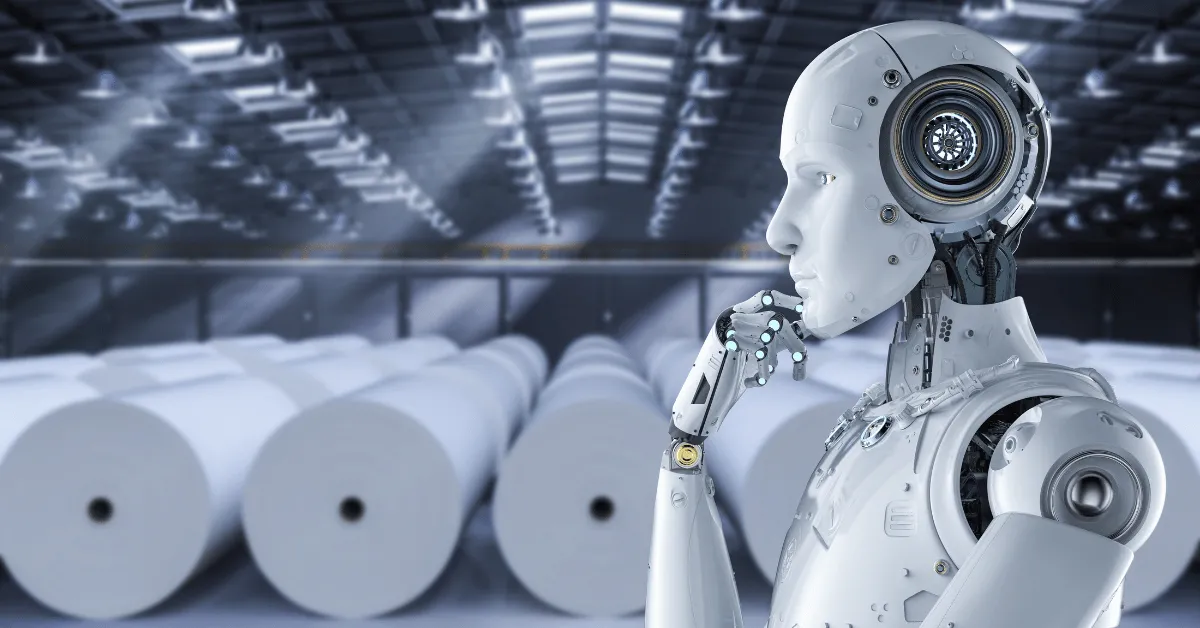Pulp and paper manufacturers face mounting pressure to boost efficiency and cut costs. High prices for raw materials, strict government rules, and less energy and water slow progress toward these goals. And the industry’s continued reliance on manual chemical dosing adds to these challenges.
Papermaking requires maintaining the right balance of chemicals throughout the production process. Mill operators periodically test and adjust chemical levels in the process according to variables like pulp consistency and pH levels. Conducting this process manually is incredibly inefficient and can lead to additional unexpected costs, such as clogged equipment or product defects like uneven bleaching.
Pulp and paper automation provides a new way forward. By leveraging AI and machine learning, automation solutions can optimize chemistry dosing. This results in better use of chemicals, higher productivity, and lower costs. So, what are the pros and cons of using an AI-driven autonomous chemistry optimization solution in papermaking?
Pulp & Paper Automation Benefits
The use of pulp and paper automation solutions has increased steadily in recent years. Analysts expect investments to grow by 9.2% each year from 2024 to 2033. But what tangible benefits do autonomous chemistry platforms bring to the table?
Cost Savings
By utilizing AI-powered autonomous chemistry optimization to accurately monitor and control everything from raw material consistency to pH levels of bleaching baths, it’s easier than ever to adapt effects in the process to meet desired outputs. As a result, papermakers can reduce costs with improved automation accuracy and maintain better quality control.
Moreover, AI-driven autonomous chemistry optimization offers additional benefits, such as faster response times relative to traditional chemistry approaches, enhanced insight into operating process dynamics to allow for optimization, and improved energy conservation through proper monitoring of chemical usage. This enables papermakers to reduce costs while maintaining better quality control.
Improved Efficiency
One of the main benefits of AI-driven autonomous optimization is improved efficiency. This technology can help identify and correct process anomalies in real time, optimize production schedules, and predict equipment failures before they happen. In addition, by automating key processes, paper manufacturers can immediately achieve cost savings.
Higher Quality Products
Thanks to the improved accuracy and consistency made possible by AI-driven autonomous optimization, businesses that implement this technology often see an increase in the quality of their products. This leads to happier customers and repeat business.
Reduced Waste
With AI-driven autonomous optimization managing your production process, you can rest assured that your company produces only the highest quality products. This helps reduce waste and keep costs down.
Pulp and Paper Automation Challenges
While the benefits of AI-driven solutions are significant, there are critical challenges businesses must navigate before implementation. Some of these include:
High Upfront Costs
The initial capital investment required for AI solutions can serve as a barrier to entry for many mills. Not only does investment include the software, but there are substantial hardware and personnel requirements. Transitioning to an automated system often involves hardware, software, and skilled personnel that can translate into a substantial operational cost. And depending on the scale and complexity of the mill, those prices can quickly compound.
Complex Implementation Process
Deploying automated chemistry systems requires careful planning, integration with existing infrastructure, and thorough training for personnel. Missteps in implementation can disrupt production processes, leading to inefficiencies, potential downtime, and unexpected costs. Worse yet, it can affect the industry’s adoption rate.
Cybersecurity Risks
As automation relies heavily on connected systems and data exchange, mills face heightened risks of cyberattacks. Unauthorized access to critical systems or data breaches could disrupt operations or compromise sensitive information, making robust cybersecurity measures essential.
Workforce Adaptation
Transitioning to AI-driven operations often requires upskilling the workforce. Resistance to change and gaps in technical knowledge can slow adoption and limit the potential benefits of the technology. Like all digital transformations, creating a comprehensive roll-out plan is key to ensuring success and following the best practices for change management.
Data Quality and Management
Effective AI solutions depend on high-quality, reliable data. Mills must ensure their data collection and storage processes are accurate and secure to avoid errors in decision-making and optimization. The trouble is that most mills produce vast amounts of siloed, unconnected data. Without the right data governance, AI solutions can only do so much to drive the best business outcomes.
The Verdict on Pulp and Paper Automation
According to McKinsey, companies that successfully implement advanced pulp and paper technologies see throughput gains of 5-10%, yield gains of up to five percentage points, and significant cost savings on materials, chemicals, and energy. So, what’s the verdict on whether or not to invest in this solution?
In today’s competitive environment, automation is no longer a luxury but a necessity. While challenges like high implementation costs and cybersecurity risks exist, the benefits — improved productivity, reduced waste, and enhanced quality — far outweigh the hurdles.
One way to mitigate risks is to work with a turnkey partner experienced in the pulp and paper industry. A trusted partner can ensure that an automated solution is tailored to the exact specifications needed for your mill and operations.
When choosing a platform, prioritize ease of implementation, system compatibility, and robust security features. Solutions like Solenis's OPTIX™ Applied Intelligence come with predictive analytics, real-time optimization, and subject matter expertise with proactive guidance to ensure measurable improvements.
If you’re still on the fence, the best solution is to ask your shortlist of vendors for a pilot program before getting in too deep. Ideally, they will provide support at every stage of implementation.
____
Solenis OPTIX™ Applied Intelligence is our exclusive partner in modernizing the pulp and paper industry, leveraging cutting-edge AI-driven autonomous solutions to optimize processes, reduce waste, and achieve unprecedented operational efficiency.

